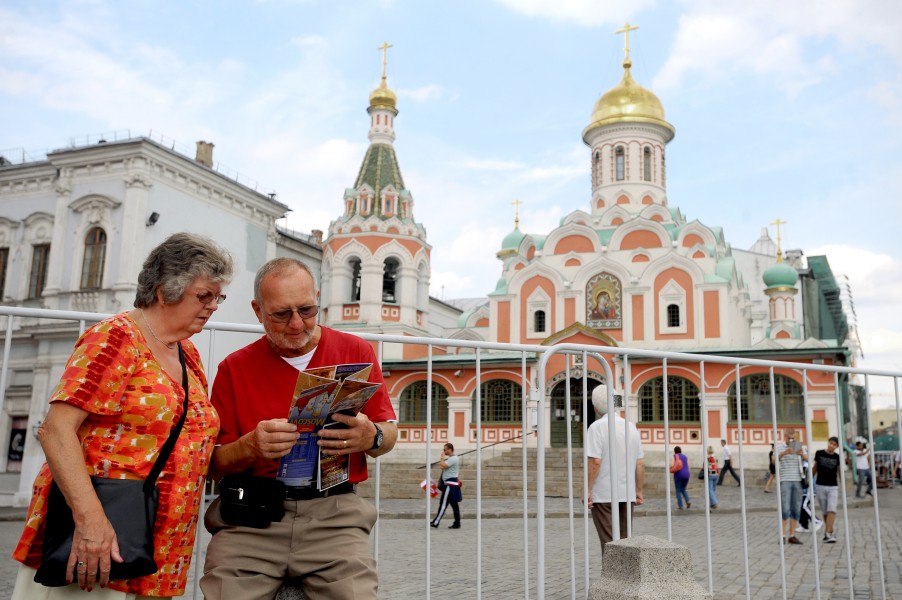
Tourism in Caspian region is on rise, bringing in nearly 18 billion dollars to the region and welcoming 35 million international tourists in 2018.
According to the World Tourism Organization, in 2017 four out of the five Caspian countries – Azerbaijan, Iran, Kazakhstan and Russia – welcomed nearly 35 million international visitors, a two percent increase from the year prior. Globally, a record 1.32 billion tourists traveled internationally last year, spending a total of $1.3 trillion. Around 2.4 million tourists visited Azerbaijan, 4.8 million went to Iran, another 3.5 million arrived in Kazakhstan, and nearly 25 million went to Russia.
The year 2017 was a record year for inbound tourists flocking to Azerbaijan, a country which is often called “land of fire”, due to the abundance of natural gas and oil deposits. The tourists spent more than $3 billion, visiting cities such as the capital, Baku, and mountainous inland regions nestled in the South Caucasus.
Situated on the western shore of the Caspian Sea, Azerbaijan’s UNESCO World Heritage Sites include historical buildings and archaeological finds, including the Zoroastrian fire temple called Ateshgah, and the Palace of the Shirvanshahs, both located in Baku.
But sightseeing is not the only reason tourists visit Azerbaijan. Since 2016, Baku has hosted annually the iconic Formula 1 racecar competitions. The officials and businesses hope to lure more tourists to the country next year, when the 2019 UEFA Europa League Final football (soccer) championship will be held there.
For its part, Iran took in nearly $5 billion in 2017 thanks to tourism. In 2016, three of Europe’s most prestigious airlines, namely British Airways, Air France and KLM, resumed flights to Tehran. Even spoiled relations with the West, which nose-dived in May when U.S. President Donald Trump pulled out of the nuclear deal, could not halt arrivals to the country. The number of visitors grew to five million in the Iranian calendar year ending in March 2018.
The visitors to Iran flocked to explore cultural treasures largely unseen by western eyes since the 1979 Islamic revolution. Iran boasts 22 UNESCO World Heritage Sites, including Tehran’s colorful Golestan Palace and striking pieces of architecture in the city of Isfahan.
With a population of more than 80 million, Iran – as the Caspian region’s second largest economy – aims to attract 20 million tourists per year by 2025. Accommodations shortage is one issue the government is trying to overcome with the help of private enterprise and foreign investment. The Tourism Holding of Iran’s Social Security Organization has launched an initiative, dubbed “100 Hotels, 100 Businesses” that includes 250 projects for the construction of four- and five-star hotels throughout Iran.
The tourism revenue for Kazakhstan in 2017 totaled $1.7 billion. The world’s fair was held there that year, called EXPO 2017, which featured eco-friendly technologies. But there is more in this vast inland country than high-tech inventions.
The natural beauty lure tourists more. The country lies along the ancient Silk Road that connected the East and West, incorporating many historical sites into its territory. The government in Astana is actively pursuing public-private partnerships to boost the country’s tourism potential.
Russia topped the list of Caspian countries in terms of tourism receipts, as visitors spent nearly $9 billion visiting the world’s largest country. Meanwhile, 2018 revenues may exceed last year’s figures due to some of the major events Russia hosted this year, including the FIFA World Cup.
To prepare for the quadrennial event, the Russian government had Saint Petersburg’s Pulkovo Airport rebuilt and constructed a new terminal at Kurumoch International Airport in Samara. It also poured millions of dollars into highway infrastructure projects.
At the same time, chefs, cooks and culinary masters throughout the country created a gastronomic map that showcases the best restaurants and where visitors could taste national dishes that convey the peculiarities of each region of the country.